Affiliate Disclaimer
Some links in this article are affiliate links. We may earn a small commission if you make a purchase through these links, at no extra cost to you. We only recommend products we find useful to our readersDust mites, pollen, and pet dander can cause respiratory discomfort, congestion, and sneezing for millions of people who suffer from dust allergies. Natural therapies offer a gentler, more sustainable approach without adverse side effects, while pharmaceuticals can provide faster relief.
This article examines 15 efficient DIY cures designed to reduce dust allergy symptoms organically. Every treatment, including saline nasal rinses, herbal teas, and lifestyle modifications, tries to boost immunological resilience and reduce exposure to allergens.
Understanding Dust Allergies
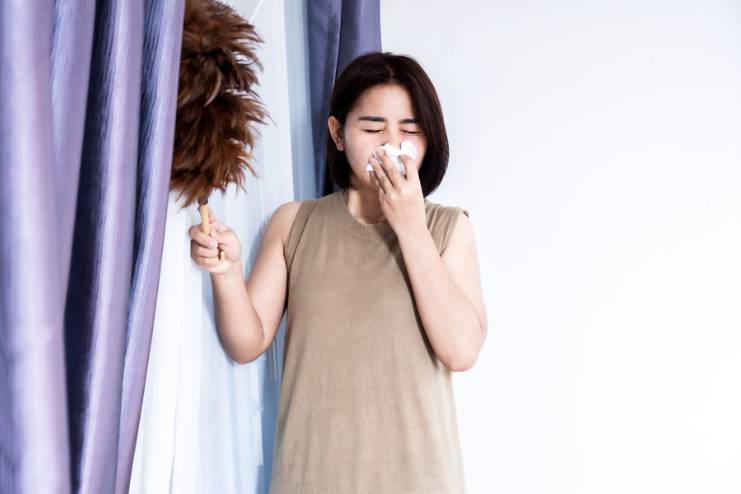
Dust allergies are hypersensitivity reactions from inhaling dust mites, mold spores, pollen, or pet dander. These tiny particles trigger the immune system, which can result in various symptoms, including sneezing, coughing, itchy eyes, nasal congestion, and even asthma episodes in severe cases.
Dust mites in mattresses, carpets, and upholstery, and pollen and mold spores carried through the air are a few of the culprits. Extended exposure to these allergens can exacerbate symptoms, making daily activities difficult and lowering the overall quality of life.

The management of dust allergies typically involves a combination of allergen avoidance techniques, regular cleaning routines, and, occasionally, medication or natural therapies to ease symptoms and enhance respiratory health. It is essential to thoroughly understand these allergens and their impact in order to manage them and improve general well-being.
Why Opt for Home Remedies?
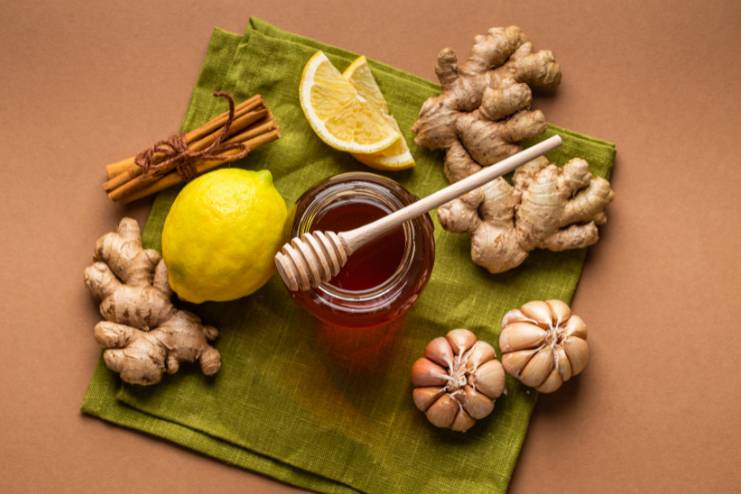
The use of home remedies for dust allergies provides several advantages, the most important of which are the natural composition of these cures and the fact that they have few adverse effects. Natural remedies often use components that are widely available at home or easily accessible. Some examples include saline solutions, herbal teas, and essential oils. Because these cures are generally easy on the body, they are acceptable for long-term use without the risk of overreliance or inadequate response typically connected with pharmaceutical medications.
Medications available without a prescription for dust allergies, may occasionally result in side effects such as tiredness, dry mouth, or impaired vision. These side effects may affect everyday activities and general well-being. Furthermore, relying solely on drugs may not be sufficient to address the underlying source of allergies or to provide long-lasting relief.
Home remedies allow people to take charge of their own health by allowing them to make straightforward adjustments to their lifestyle and implement natural interventions that boost immune function and limit allergen exposure. They provide a holistic approach to the management of dust allergies, working to promote overall wellness in addition to providing relief from symptoms.
15 Effective Home Remedies for Dust Allergies
1. Saline Nasal Rinse
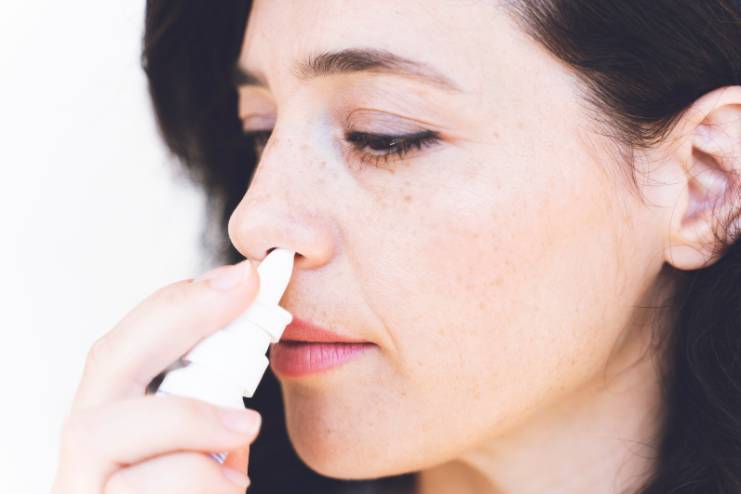
A straightforward and efficient saline nasal rinse can clear the nasal passages of allergens and mucus.
To prepare, combine distilled water, salt that has not been iodized, and a small amount of baking soda. Use a neti pot or squeeze bottle to rinse each nostril cautiously. This natural remedy is effective in reducing the symptoms of nasal congestion by cleaning out irritants and calming an irritated nasal passage.
2. Steam Inhalation

By inhaling steam, one can moisturize and clear the nasal passages, steam loosens the mucus and reduces nasal congestion. The warm and moist air provides instant relief from the symptoms of allergies.
Bring water to a boil, then pour it into a bowl. While leaning over the bowl, cover your head with a towel to prevent the steam from escaping, and take deep breaths for five to ten minutes.
3. Local Honey
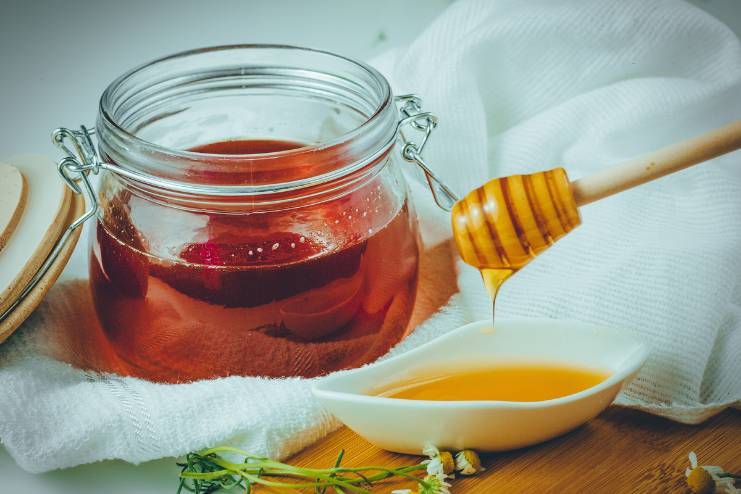
Regularly consuming locally-sourced honey can help manage allergy symptoms. Traces of pollen from flowers can be found in local honey. By consuming this honey, you are exposing your body to these allergies in controlled doses and your immune system becomes less sensitive to allergens.
Consume one spoonful of raw, unfiltered honey daily. drink it straight or Stir it into tea or warm water.
4. Apple Cider Vinegar

A natural medicine with many uses, apple cider vinegar may help treat allergic responses. Its anti-inflammatory qualities relieve allergy-related symptoms such as sinus congestion and nasal irritation. Apple cider vinegar’s acidity may also aid in the breakdown of mucus and enhance digestion, enhancing respiratory health and reducing allergy-related symptoms.
Combine one to two teaspoons of apple cider vinegar with juice or water and drink it before meals, to boost immune function.
It’s important to dilute apple cider vinegar to avoid irritating the lining of your stomach or throat.
5. Probiotics

A healthy gut flora is essential for a robust immune system. Fermented foods like sauerkraut, kefir, and yogurt are rich in natural probiotics that support intestinal health. These probiotics improve gut health by promoting beneficial bacteria development for digestion and nutrition absorption. This improvement in immune response may help the body control allergen reactivity and reduce allergy symptoms.
One easy way to get probiotics is to eat fermented foods like kimchi or yogurt for breakfast.
6. Quercetin-Rich Foods

Quercetin is a flavonoid well-known for stabilizing mast cells in the body. Mast cells release histamines, molecules that cause allergy symptoms like sneezing, itching, and congestion, and they play a critical role in allergic reactions.
Quercetin stabilizes mast cells, helping lessen the release of histamines into the bloodstream. This activity also helps relieve symptoms brought on by allergies to dust mites, pollen, and other environmental triggers by reducing the severity and frequency of allergic reactions.
Foods high in quercetin, like apples, berries, onions, and leafy greens, have important anti-inflammatory qualities that can help effectively manage allergy symptoms.

7. Neti Pot

A neti pot is a simple and effective tool for nasal irrigation, and it is especially helpful for people suffering from allergy and sinus symptoms. This device cleans out the nasal passages of dust and mucus with saline.
Before Using a Neti Pot:
- Create a saline solution with distilled water and non-iodized salt.
- Place your head sideways over a sink and insert the net pot’s nozzle into the nostril.
- Slowly pour the saline solution into your nose while breathing through your mouth. The solution will reduce inflammation after flowing through your nasal passages and out the opposite nostril.
This rinse removes irritants and hydrates nasal passages, quickly relieving sinus pressure and congestion. Use a neti pot regularly to maintain nose hygiene, reduce allergy symptoms, and promote respiratory health. As with any nasal care program, use sterile water and clean up to avoid infection or irritation.
8. Essential Oils
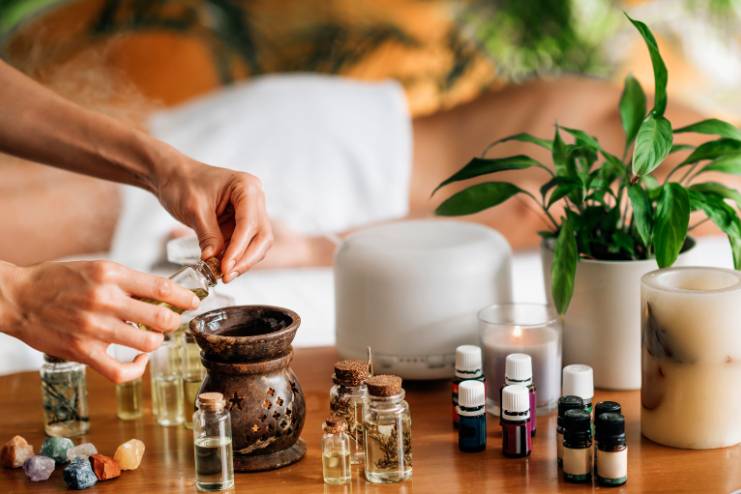
Peppermint, eucalyptus, and lavender essential oils are proven to relieve dust allergy-related respiratory issues. These oils release fragrant molecules that clean and purify the air when diffused. This cleansing may reduce coughing, sneezing, and nasal congestion by decreasing airborne allergens.
For faster relief, dilute essential oils with coconut or almond oil and apply to the temples or chest. This application method allows oils to penetrate the skin and begin their anti-inflammatory and relaxing effects. Peppermint and eucalyptus oils are cooling and decongestant, respectively.
Adding these essential oils to your allergy routine can naturally minimize dust allergy symptoms. Before administering topically, take a patch test and see a doctor if you have allergies or respiratory difficulties.
9. Turmeric
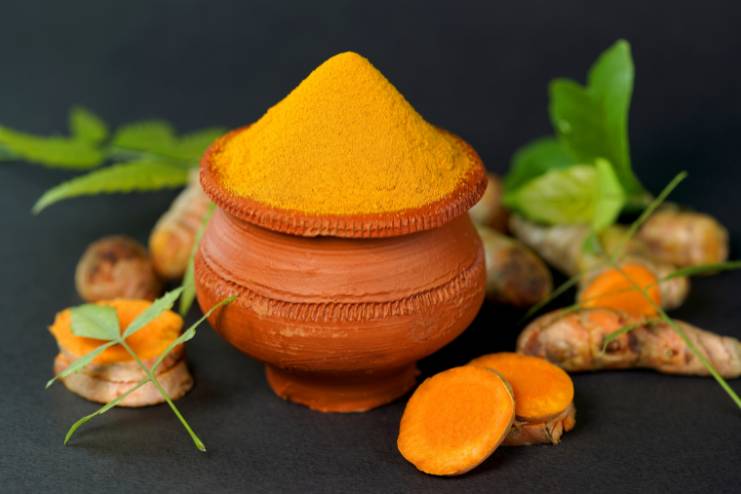
Including turmeric in your diet can help alleviate dust allergy symptoms. Bright yellow and frequently used in cooking, turmeric includes curcumin, which has potent anti-inflammatory effects. Turmeric reduces inflammation in your body, including your nasal passages.
Adding turmeric to soups, stews, or roasted veggies is a simple way to include it in your diet. You can also steep it in ginger and honey to make a calming tea. Regular turmeric ingestion may help reduce allergic symptoms by reducing inflammation and promoting general respiratory health.
10. Butterbur
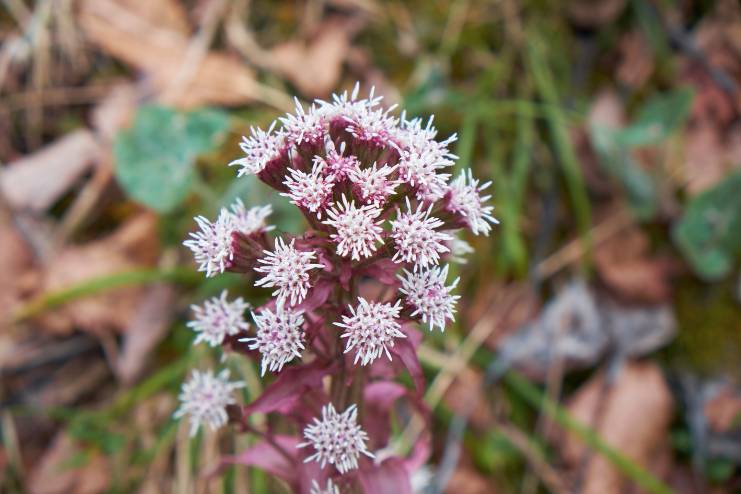
Butterbur has anti-inflammatory and antihistamine qualities that may help relieve allergy symptoms. The immune system of those with allergies overreacts to allergens, like pollen, dust mites, or pet dander, resulting in symptoms like sneezing, itching, nasal congestion, and watery eyes. Butterbur supplements can help relieve these symptoms.
Butterbur supplements or extracts should be consumed according to the instructions provided on the packaging. Select a trusted brand and discuss the use of this supplement with a qualified medical practitioner. Choose a product that is certified as PA-free (pyrrolizidine alkaloids).
11. Vitamin C

Consuming foods high in vitamin C, such as citrus fruits, strawberries, and bell peppers, can improve symptoms of dust allergies and reduce histamine levels.
Vitamin C helps your body fight infections, reduces the intensity of allergic reactions, and shields your cells from harm. By lowering histamine synthesis, vitamin C can help your body respond less aggressively to environmental stressors during allergy season.
12. Peppermint Tea
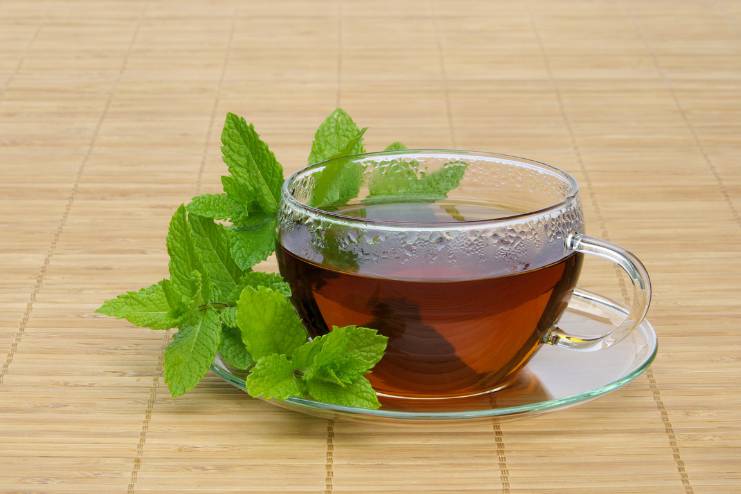
Peppermint tea relieves dust allergy-related congestion and respiratory pain. Fresh or dried peppermint leaves contain menthol, which opens airways and makes breathing easier. A natural decongestant, the menthol in peppermint tea relieves nasal congestion and respiratory tract inflammation. The excellent taste can also alleviate allergy-related throat discomfort. Peppermint tea provides hydration, antioxidants, and allergy relief throughout the day.
To make the tea, steep a handful of fresh or dried peppermint leaves in boiling water for 5-10 minutes. This allows the water to absorb the leaves’ beneficial oils, creating a calming and aromatic infusion.
13. Bath or Shower
A hot bath or shower can provide many therapeutic benefits, especially for people who experience skin irritation and nasal congestion. The steam in a hot bath effectively clears the nasal passages. When inhaled, steam helps reduce sinus pressure and clears mucus, significantly reducing the discomfort from colds and allergies.
Furthermore, the hot water itself has the potential to relieve irritated skin. Warmth promotes blood circulation, which reduces itching and inflammation. In addition, the water aids in cleaning your skin and hair of irritants that may be sticking to it, such as dust, pollen, and pet dander. It stops further irritation and relieves itching.
14. Stinging Nettle
Stinging nettle, a plant with microscopic, hair-like filaments that sting when touched, has a rich history as a natural remedy for allergy symptoms. Herbalists have revered stinging nettle for generations, recognizing its potent therapeutic properties, particularly its ability to regulate the body’s histamine levels.
The immune system releases histamine during allergic reactions, leading to symptoms like sneezing, itching, and swelling. With its natural compounds, stinging nettle can suppress histamine synthesis, relieving these unpleasant effects and connecting you to a tradition of natural healing.
15. Acupuncture
Traditional Chinese medicine’s mainstay, acupuncture, has long been used to treat various illnesses, including allergic rhinitis. This conventional method carefully inserts tiny needles into predetermined bodily spots called acupoints. Acupuncture aims to restore equilibrium to the body’s energy channels.
Acupuncture for allergic rhinitis focuses on particular sites believed to affect the immunological and respiratory systems. By stimulating these points, acupuncture can help regulate the body’s reaction to allergens, which may help lessen symptoms, including sneezing, itching, and congestion in the nose.
Preventive Measures
Dust allergies require proactive measures to avoid exposure and flare-ups. These preventive steps can significantly improve daily comfort and reduce allergy risks.
Tips to Avoid Dust Allergy Flare-Ups:
- Cover mattresses, pillows, and bedding with allergen-proof covers to prevent dust mites.
- Use a HEPA-filtered vacuum cleaner to clean carpets, rugs, and upholstery weekly to remove allergens.
- Regularly dust surfaces with moist wipes to avoid airborne allergies.
- Regularly wash sheets, pillowcases, and blankets in hot water (over 130°F) to destroy dust mites and allergies.
- Plush furniture like curtains and pillows absorb dust and allergens, so limit them.
Lifestyle Changes to Reduce Exposure:
- For continual allergen removal, utilize HEPA air purifiers in bedrooms and other regularly used locations.
- Keep house humidity below 50% to prevent dust mite proliferation.
- Reduce pet exposure if allergic; bathe pets regularly and keep them out of bedrooms.
- Take shoes off at the door to reduce dust in the home.
- Keep track of pollen counts and limit outside activity on high pollen days.
By incorporating these preventive measures into daily routines and implementing modest lifestyle changes, dust allergies can be managed, symptoms reduced, and living conditions improved.
When to See a Doctor
Many dust allergy sufferers find home cures and preventive measures work well; however, they may sometimes need professional medical guidance.
Signals for When to Seek Professional Medical Advice:
- Severe Symptoms: including trouble breathing, wheezing, and chest tightness.
- Lack of Relief: Symptoms that do not respond to OTC or home remedies.
- Allergic Reactions: Symptoms such as facial, tongue, or throat swelling.
- Impact on Daily Life: Allergic symptoms that significantly affect daily activities, sleep, or well-being.
Doctors’ Treatment Options:
- For severe symptoms, antihistamines, nasal corticosteroids, or decongestants may be prescribed.
- Allergy Test: Skin or blood tests to identify allergens for tailored treatment.
- Immunotherapy: The process of gradually desensitizing the immune system to allergens by sublingual pills or allergy injections.
- Referral to an allergist or immunologist for expert allergy treatment.
- Lifestyle Advice: Tips for reducing allergy exposure through lifestyle or environmental modifications.
- Seeking medical counsel early ensures complete evaluation and specific dust allergy treatment choices, enhancing quality of life and minimizing symptoms.
Conclusion
The natural solutions for dust allergy management listed in this article offer practical ways to reduce symptoms and improve overall health. These methods, ranging from saline nasal rinses and essential oils to food supplements like local honey and turmeric, offer mild relief without unpleasant side effects.
Incorporate these into everyday life to reduce exposure to allergens and strengthen the immune system.
We invite you to experiment with these natural cures to see which suits you best. The secret to healthily treating dust allergy symptoms is consistency. By taking preventative actions and using a comprehensive strategy, you can have more comfort and a healthier living environment. Cheers to having a healthy, natural life and breathing easier!
-
May 2019Written by Somapika D
-
Aug 2024Edited by Ankita
In this Article





















